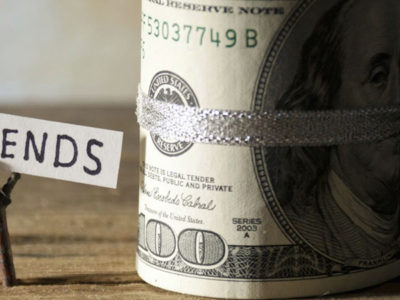2015 Market Outlook – Recognize & Control Risk
If we define market risk as the uncertainty of future outcomes, we can also agree that risk can be defined as the possibility of loss, perhaps permanent loss. Recognizing risk begins with an understanding of value and knowing when an asset is priced high relative to the projected return. This is critical. So, high risk with a low projected return is clearly an acknowledgement of the relationship between value and price, and the associated risk.
Risks increase as markets and valuations rise, since the projected returns, based on historical values and price trends, decline. Quite simply, as a bull market in stocks or real estate ages and prices rise, investors become more risk-friendly, looking for greater returns, even though history would suggest the opposite will occur. When investors are willing to accept more risk, as a result of perhaps recent positive performance, the rational investor should be skeptical of future returns continuing at the same pace. And, if you are going to accept risk, don’t you want commensurate potential returns for assuming the risk? So, why would the unemotional, level-headed investor buy more of a stock or asset class as it becomes pricier and the projected returns decline? It doesn’t make sense, yet this is how most investors think and behave.
When investors have few worries and are complacent, often because recent returns have been steady and positive, (as has been the case of late), they develop a tolerance for risk and pay higher prices for assets. During periods of high valuations or bubbles, as price-to-earnings multiples rise, low or even negative projected returns become more likely. So, it’s critical to recognize when risks are elevated and projected returns look unattractive.
The degree of risk present in the market is determined by the behavior of the participants (buyers and sellers) and if ignored will lead to possibly poor returns and certainly unattractive returns on a risk-adjusted basis. At extremes, greed and the possibility of easy profits encourages the herd to pile into investments with little regard for risk, value or an understanding of the consequences of their actions. This is what pushes markets into dangerous bubble territory. It also stems from a belief that the good times will continue, indefinitely, and increased risk isn’t actually considered increased at the time it is assumed. In other words, the irrational investor doesn’t recognize that risks have actually increased as prices and multiples rise – he or she believes the investment is actually low-risk and has been conditioned to believe so by the attractive recent returns. So, if it is not really risky, why not buy more?
Increased risk in investing comes from paying a high price for a lower projected return when optimism is rampant and there is little concern for potential loss of capital. Where we stand today, in January 2015, I see many of the same market characteristics and behavior exhibited by investors that I saw at the height of our most recent bubble in real estate and stocks in 2007. Fast forward eight years and here we are again – we have low levels of skepticism and fear with many participants willing to take on higher risks with little awareness that the projected returns don’t warrant the risk assumed. This clearly has the makings of another bubble and one could argue we are already in one in the stock market. Currently, one sees few assets that investors are willing to sell, except at premium prices and buyers are increasingly willing to pay higher prices for an asset they were perhaps unwilling to buy at discounted prices a few years ago.
Most investors are unaware that their behavior causes market risk to rise and fall. Risks rise as investors accumulate more stocks and real estate, and drive prices up. And, the opposite is true if they are unloading assets in a panic (bear-market behavior) – the market actually becomes less risky as future returns look more attractive. The current increased confidence of the retail investor and even the “professional” fund manager should make the skeptical or contrarian observer worried as projected returns are reduced due to rising prices. And, the opposite is true too. If investors are of the mindset that “I won’t buy that at any price because it’s too risky,” there might be a great opportunity to profit for those who can recognize it.
A good investor can control risk, first and foremost, because he recognizes it exists and has an understanding when it is elevated. However, since there are more good years than bad in the stock market, this recognition of risk may only become apparent in bad years (negative market returns) – that risk control was important and necessary at the time. Risk control in anticipation of a bear market or correction is critical, and the objective of losing less than the market itself or other participants and minimize drawdowns is a worthy pursuit. If possible, to not lose any money during these drawdowns would obviously be ideal.
Right now, given the strong bull-market returns we have seen over the past six years and with stock prices yet again pushing all-time high valuations (the cyclically-adjusted price-to-earnings ratio is now 27), I believe it makes sense for all investors to recognize and control risk. Here are a handful of relatively conservative stocks for 2015 that may meet your objectives of moderate risk and growth potential with decent annual income too.
Top 2015 Picks for Risk-Adjusted Returns (low volatility and moderate gain potential):
| Name | Symbol | % Current Yield | Beta |
| Coca-Cola | KO | 3 | 0.7 |
| General Mills | GIS | 3.4 | 0.6 |
| Johnson & Johnson | JNJ | 2.6 | 0.75 |
| Microsoft | MSFT | 2.6 | 0.9 |
| Procter & Gamble | PG | 3 | 0.6 |
At the time of publication, Stuart Chaussee and/or his clients hold positions in Coca-Cola, General Mills, Johnson & Johnson, Microsoft and Procter & Gamble. Holdings can change at any time. Under no circumstances does the information in this column represent investment advice or a recommendation to buy or sell securities.


